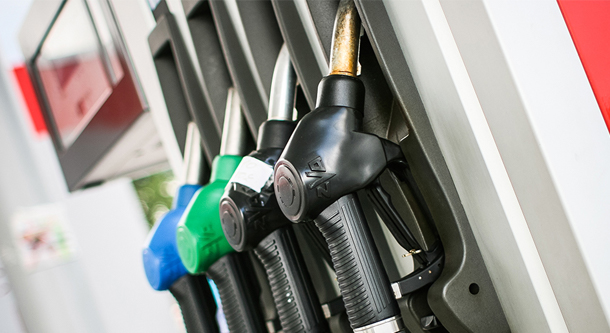
Gas prices jumped 12 cents over the past 14 days, and six-cents since last Monday, landing the national average at $2.93 – the highest price point going into the Memorial Day weekend since 2014.
| Previous Memorial Day Weekend | Average Price National Gas Price |
| May 22 – May 26, 2014 | $3.65 |
| May 21 – May 25, 2015 | $2.74 |
| May 26 – May 30, 2016 | $2.32 |
| May 25 – May 29, 2017 | $2.37 |
“AAA forecasts nearly 37 million travelers will hit the road for the holiday weekend. Compared to an average of the last three Memorial Day weekends, pump prices are nearly 50 cents more expensive and climbing,” said Jeanette Casselano, AAA spokesperson. “Trends are indicating that this summer is likely to bring the national average to at least $3/gallon.”
Today, 14 states tout an average of $3.00 or more. Outside of the typical West Coast states, Idaho and Utah, this count includes six Northeast and Mid-West states: Connecticut, Pennsylvania, New York, Washington, D.C., Illinois and Michigan. In addition, Arizona, New Jersey, and Rhode Island are all within four-cents of hitting the $3 mark.
Quick Stats
- The largest monthly increases are: Minnesota (+28 cents), Wisconsin (+27 cents), Missouri (+25 cents), Connecticut (+23 cents), Delaware (+23 cents), Illinois (+23 cents), Wyoming (+22 cents), Kansas (+22 cents), Arizona (+21 cents) and Texas (+21 cents).
- The nation’s topten most expensive markets are: California ($3.71), Hawaii ($3.68), Washington ($3.41), Alaska ($3.36), Nevada ($3.32), Oregon ($3.31), Idaho ($3.16), Utah ($3.14), Connecticut ($3.11) and Pennsylvania ($3.08).
West Coast
The West Coast region is home to the states with the highest gas prices in the nation: California ($3.71), Hawaii ($3.68), Washington ($3.41), Alaska ($3.36), Nevada ($3.32), Oregon ($3.31) and Arizona ($3.00). On the week, prices in the region have all increased. Arizona (+6 cents) saw the largest increase, while Washington and Alaska are close behind with each state’s average for unleaded regular gasoline increasing by four cents.
Motorists in Arizona (+70 cents) are seeing the largest year-over-year increase in the region and the second largest weekly increase in the country. Of West Coast states, California (+66 cents) and Hawaii (+62 cents) join Arizona on this top 10 list this week.
For the week ending on May 11, the Energy Information Administration (EIA) revealed that gas stocks fell by approximately 200,000 bbl to 29.7 million bbl. Current inventory levels are 600,000 stronger than they were at the same time last year, with increasing imports helping to buoy inventories. Imports increased by 50,000 bbl to 117,000 bbl last week.
Great Lakes and Central
As gas prices continue to increase across the country, two Great Lakes and Central states have averages of $3 or more: Illinois ($3.04) and Michigan ($3.00). At $2.95, Indiana may hit the $3/gal mark before June arrives.
On the week, seven states made their way on to the Top 10 list with the biggest increases: Indiana (+9 cents), Minnesota (+9 cents), Wisconsin (+9 cents), North Dakota (+9 cents), Kansas (+8 cents), Michigan (+8 cents) and Illinois (+8 cents).
In the region, motorists in Illinois (+65 cents) and Indiana (+63 cents) are seeing the largest year-over-year difference in gas price averages.
Gasoline inventories have been declining week-over-week for two months. However, with the latest draw (1.6 million bbl), gasoline inventories measure at 54 million bbl, which is about one million more than this time last year.
South and Southeast
The South and Southeast continue to tout the cheapest gas in the country, but prices are at least 50-cents more expensive than this time last year. The chart below lists the five cheapest gas price averages in the region on May 21, 2017 compared to today, May 21, 2018:
| State | May 21, 2017 | May 21, 2018 | Price Difference |
| South Carolina | $2.05 | $2.64 | +59 cents |
| Mississippi | $2.09 | $2.61 | +52 cents |
| Alabama | $2.09 | $2.62 | +53 cents |
| Arkansas | $2.10 | $2.64 | +54 cents |
| Oklahoma | $2.10 | $2.66 | +56 cents |
Following the previous week’s 10-cent increase, Florida’s gas price average held steady on the week at $2.82. However, all other states are seeing prices continue to climb with the start of the work week: New Mexico (+8 cents), Texas (+8 cents), Georgia (+7 cents), Louisiana (+7 cents) Oklahoma (+6 cents), Arkansas (+6 cents) and South Carolina (+6 cents).
With a 1 million bbl draw, the South and Southeast regions have dialed back on gasoline inventories for a third consecutive week. Inventory levels fall to 78 million bbl – the lowest inventory level for this week in May since 2016.
Mid-Atlantic and Northeast
Gas prices are 3- to 7-cents more expensive on the week for Mid-Atlantic and Northeast states. New York and Connecticut both saw the largest jump of seven cents followed by these states that saw a six-cent increase: Maryland, Washington, D.C. and North Carolina.
State gas price averages for Connecticut ($3.11), Pennsylvania ($3.08), New York ($3.07) and Washington, D.C. ($3.06) remain above the $3/gallon price point with New Jersey ($2.99) likely to join this list potentially by Memorial Day and Rhode Island ($2.96) not far behind.
Compared to a year ago, Delaware (+63 cents) and New Jersey (+62 cents) state gas price averages have the biggest increases of all states in the region.
Despite a nearly 675,000 bbl draw, inventories continue to measure above the 63 million bbl level. That being said, compared to this time last year, inventories are at a 7 million bbl deficit in the Mid-Atlantic and Northeast region.
Rockies
Utah (-1 cent) was the only state in the country and region to see gas prices drop on the week. Even with that slight decrease, however, Utah ($3.14) and Idaho ($3.16) continue to make an appearance on the Top 10 list of states with the most expensive gas price averages on the week. They also land on the Top 10 list with the largest year-over-year difference in gas price averages. Utah (+71 cents) leads the nation and Idaho (+61 cents) ranks 10th.
Montana (+8 cents) leads the region with the biggest spike in prices on the week, followed by Colorado (+7 cents) and Wyoming (+5 cents). Motorists can expect to see prices continue to increase as tourism seasons kicks off in the Rockies region, which traditionally means inventory dwindles to the lowest levels of the year.
At 6.6 million bbl, inventories are at the lowest for the year and 1.1 million bbl below levels this time last year.
Oil market dynamics
At the close of Friday’s formal trading session on the NYMEX, WTI fell 21 cents to settle at $71.28. Oil prices edged higher last week following the release of EIA’s weekly petroleum report that showed total crude inventories dropped by 1.4 million bbl. If this week’s EIA report shows another inventory draw, we can expect crude prices to continue climbing.
Additionally, at 2.57 million b/d, crude exports last week saw the highest rate ever recorded by EIA. The new record rate was 690,000 b/d more than the previous week and 1.48 million b/d more than this time last year. The surge in exports is attributed to growth in domestic crude production and Congress and the Obama Administration lifting the 40-year crude export ban in 2015.
Steady growth in crude exports from the U.S. will likely put another spotlight on the crude reduction agreement between OPEC and non-OPEC producers, which is set to expire at the end of 2018. Amid strong global demand and reduced output from OPEC and its partners, including Russia, the U.S. has been able to sell more crude to foreign buyers. Moreover, although the U.S. did not add any active oil rigs last week, according to Baker Hughes, Inc., the current total – 844 – is 124 more rigs than this time last year.
Motorists can find current gas prices along their route with the free AAA Mobile app for iPhone, iPad and Android. The app can also be used to map a route, find discounts, book a hotel and access AAA roadside assistance. Learn more at AAA.com/mobile.



